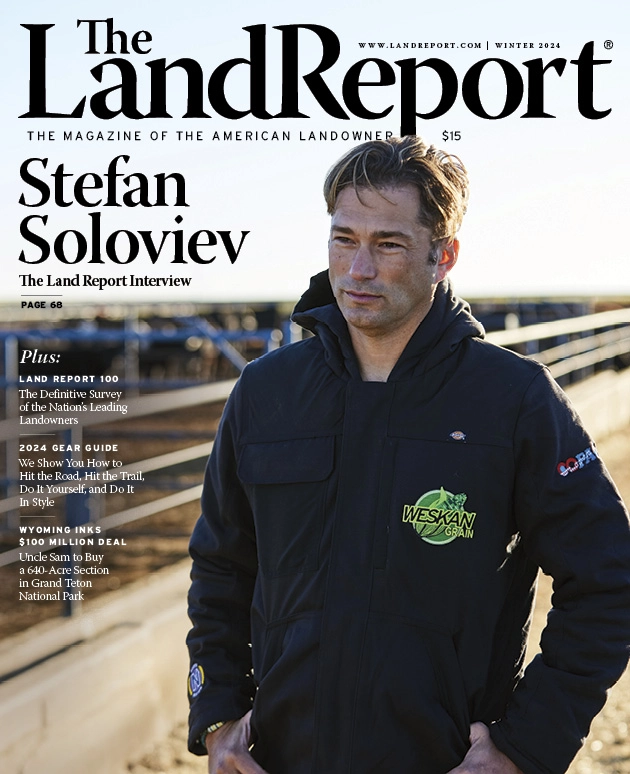By the Numbers: Rancho Sisquoc
By the Numbers: Rancho Sisquoc
Only The Land Report can offer an exclusive look at this historic, 38,000-acre California landmark in the high mountains of Santa Barbara County as Land Report Editor Eric O’Keefe interviews Jim Flood.
“Most people in California talk about Spanish land grants. There are very, very few Spanish land grants. The majority of the old properties in California are Mexican land grants. Ours is a Mexican land grant.
“My father bought the property in 1952. We have about 38,000 acres. It’s essentially a rectangle about five miles wide and 10 miles long. All told it’s about 50 square miles and very steep. A lot of sagebrush on it. A lot of up and down. Rugged country. Annual rainfall is just 14 inches at the lower end of the ranch and about 18 to 20 inches higher up in the mountains.
“Historically, they ran sheep on Rancho Sisquoc. We never did. The last couple hundred years or so, it’s been cattle. We have about 1,000 mother cows — Angus, Angus cross — and we breed them every year and sell the calves when they’re six months to a year old.
“We planted 200 acres in 1968 — this is my father’s doing — and that makes us the second oldest grape grower in Santa Barbara County. Bob Mondavi came down and helped us get going. So did Andre Tchelistcheff and Maynard Amerine. They were curious. In 1972 we started off making 40 gallons. I think that’s what you’re allowed to make for a home winery. Now we have 400 acres planted in Cabernet Sauvignon, Chardonnay, Pinot Noir, Malbec, Merlot, Riesling, Sangiovese, Sauvignon Blanc, Sylvaner, and Syrah, and we’re up to 14,000 cases.”
RANCHO SISQUOC BY THE NUMBERS
2 principal cattle breeds
Angus & Angus cross
14” to 20” annual rainfall
38 acres per animal unit
400 acres under vine
1,000 mother cows
1952 acquired by the Flood family
1968 first grapes planted
14,000 cases of wine produced
38,000 acres




